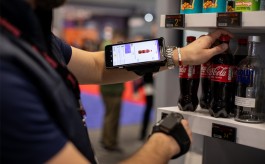Print on demand industry projected to reach $64.3 billion by 2032, witnessing a CAGR of 26.4 % from 2023 to 2032.
By Retail4Growth Bureau | October 11, 2023
With PoD solutions and services, sellers upload their designs to online platforms, customers place orders for products featuring these designs, and the PoD providers take care of production, packaging, and direct shipping to the customers.
Allied Market Research has released a report, titled, "Print on Demand Market by Component (Software and Service), by Product (Apparel, Home Decor, Drinkware, Accessories, Others), and End-user (Businesses and Individuals): Global Opportunity Analysis and Industry Forecast, 2022-2032". According to the report, the print on demand industry generated $6.4 billion in 2022, and is projected to reach $64.3 billion by 2032, witnessing a CAGR of 26.4 % from 2023 to 2032.

The print on demand (PoD) business model enables individuals and businesses to create personalized products without the need for storing inventory or owning production facilities. With PoD solutions and services, sellers upload their designs to online platforms, customers place orders for products featuring these designs, and the PoD providers take care of production, packaging, and direct shipping to the customers. This approach offers several advantages, including lower initial expenses, reduced inventory risks, and the ability to offer a wide range of highly customized products. Its popularity stems from its scalability, global reach, and suitability for e-commerce, making it an attractive option for businesses and startups looking to enhance and expand their offerings through personalized services.
Prime determinants of growth
The inclination toward fashion apparel and unique products and the rise in disposable income are driving the growth of the print on demand industry. In addition, the positive influence of the entertainment industry is fueling the growth of the market. However, lack of control and transparency for the artists and creators and challenges in printing on various kinds of fabric limit the growth of this market. Conversely, growing e-commerce penetration and sales are anticipated to provide numerous opportunities for the expansion of the market during the forecast period.
Covid-19 Scenario
- The COVID-19 pandemic had a significant impact on print on demand market owing to the growing demand for personalized products. In addition, demand for digital designs for print-on-demand products, such as downloadable art prints and digital planners increased during the pandemic.
- In addition, more customers opted for Internet purchasing due to lockdowns, limitations, and concerns about visiting physical stores. As a result, this resulted in e-commerce sector growth, including the print on demand market as people sought ways to shop for personalized items without leaving their homes. These factors have propelled the growth of print on demand solutions among industries.
The software segment to maintain its leadership status throughout the forecast period
Based on component, the software segment held the highest market share in 2022, accounting for more than two-thirds of the print on demand market revenue and is estimated to maintain its leadership status throughout the forecast period. As it offers a range of significant benefits that streamline and enhance the customization and distribution of products. However, the service segment is expected to portray the largest CAGR of 29.1% from 2023 to 2032 and is projected to maintain its lead position during the forecast period. The increasing adoption of managed web services in several organizations provides convenience, expertise, and all-time support, allowing organizations to focus on their core business functions
The apparel segment to maintain its lead position during the forecast period
Based on product, the apparel segment accounted for the largest share in 2022, contributing to more than two-fifths of the print on demand market revenue and is expected to dominate the market revenue throughout the forecast timeframe. Printing on demand for apparel products enables entrepreneurs to build unique designs, graphics, or slogans for different clothing such as t-shirts, hoodies, hats, and more. These factors further drive the demand for this segment in the global market. However, the home decor segment is expected to portray the largest CAGR of 29.7% from 2023 to 2032 and is projected to maintain its lead position during the forecast period. The growth of the segment of home decor is mainly driven by providing soft furnishings and kitchenware that showcase personalized and customized decoration products.
The businesses segment to maintain its leadership status throughout the forecast period
Based on end user, the businesses segment held the highest market share in 2022, accounting for nearly three-fourths of the print on demand market revenue and is estimated to maintain its leadership status throughout the forecast period. This is attributed to the increasing usage of print on demand solutions and services in various businesses. However, the individual's segment is projected to manifest the highest CAGR of 30.2% from 2023 to 2032. The increasing demand for effective print on demand services among individuals is further expected to propel global market growth.
North America region to maintain its dominance by 2032
Based on region, the North America segment held the highest market share in terms of revenue in 2022, accounting for more than one-third of the print on demand market revenue. Businesses in this area are embracing these solutions at an increasing rate which is anticipated to propel the growth of the market, which is further anticipated to propel the growth of the market in this region. However, Asia-Pacific is expected to witness the fastest CAGR of 29.7% from 2023 to 2032, and is likely to enhance the market growth during the forecast period. The presence of strong government policies regarding privacy and security in this region has been driving the growth of the global market.









Comments